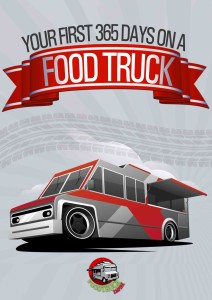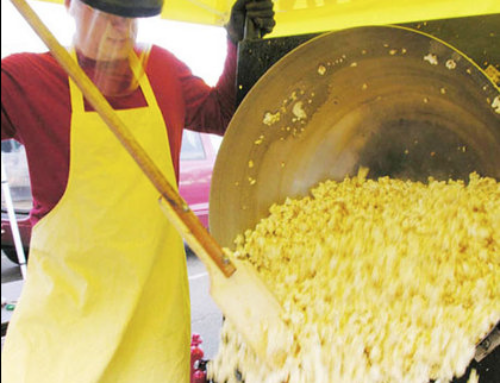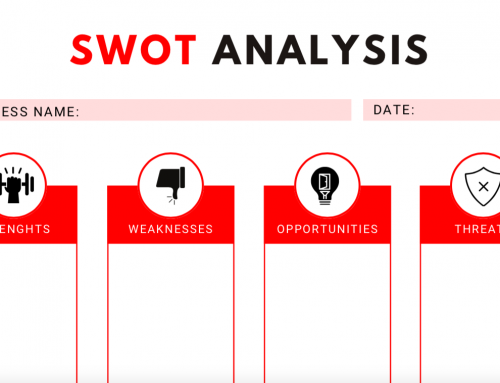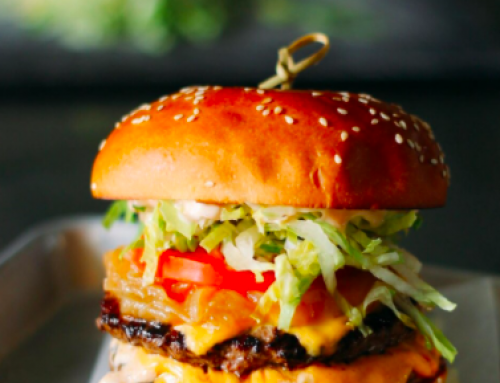Podcast: Play in new window | Download | Embed
Subscribe: RSS
Want to look inside the business plan of a real food truck business? We’ve organized detailed business plan templates from successful food trucks and made them available to you in PDF and Word doc in this post. In addition to offer templates, we give you detailed instruction how to complete each section of the plan using this guide.
Before we dive in, keep in mind that it could take weeks if not months of planning to develop a business plan that’s helpful. Whatever time takes for you to write the business plan will be well spent. When researched correctly this document serves as the “game plan” for operating your entire mobile food business and sets the direction of your company.
Approach this document seriously because it can become the roadmap to operate your business and ensure you’re set up for success. When you’ve finished writing your plan, you should know where you plan to vend, estimated food costs, the marketing plan, and how you’ll raise money for the food truck. Pretty important stuff right? Let’s dig in.
Introduction
I want you to get the most value possible out of your business planning process. Why? I believe having an accurate business plan gives you the best odds of success for operating a profitable food truck.
And if you’re going to be investing tens of thousands of dollars into a food truck or trailer, cooking equipment, and permits, why not invest a few days creating a detailed plan for how to run the business.
Here’s one example why going through this process can be helpful from our Annual Food Truck Academy class, where train future food truck owners how to start a food truck. One student completed her research estimating food cost, overhead, and anticipated sales as part of her business plan. Then she came back and revealed that based on her current plan, the food truck wouldn’t be profitable. After factoring in tax, labor, and food costs there were no profits left over.
Our student was initially discouraged by the numbers, but I was happy. It’s much better to identify a revenue short-fall before you start the business than months after when you see sales coming in, but can’t figure out why there’s nothing left in the bank account. As a result of the work invested on the front end through planning, she was able to evaluate her ingredient cost and pricing to create a business plan that set herself up for success.
Still, many first time food vendors don’t take the time to put in this work. It’s a shame because it’s so easily avoidable.
One more tip before we get into researching and writing the business plan, don’t get overly hung-up on the structure of the document. Unless you plan to apply for a small business loan (then you will need to be more concerned about formatting, but let’s worry about that later), you’re not going to be graded on how pretty the document looks or how nice the nice fonts and illustrations. This isn’t an assignment for school where you’re going through the motions to get a B.
Instead focus your energy on making this plan useful for your business. Find specific locations that you plan to sell food. Get the contact information for these venues to learn how you can get into them. Figure out your exact food cost and how much it’s going to cost to get permits in your area. Putting ink to paper or word document is going to make the operations of your business real.
Now let’s get on with making your game plan!
Note to Reader: This is part of a series of posts following the process of starting a food truck with Anthony Salvagno (featured in the image below) as he writes a business plan, seeks funding, develops a concept, builds a menu, and ultimately launches his first food truck. Listen to the audio lesson inside this post to learn more about writing a winning food truck business plan.
The person that doesn’t have one [a business plan] sets themselves up for failure. – Anthony Salvagno on the importance of thinking before leaping into a business.
Serious about Starting a Food Truck? Click Here To Get Our Free Food Truck Business Kit.
Download Business Plan Templates
In my opinion, this case study is most effective when listening to the audio and downloading the example that Salvagno was kind enough to provide for this post. I’ve also linked to other resources that can help you write your own business plan.
Download Business Plan – Yes, this is the PDF business plan used to acquire $5,000 for a food truck during a business pitch competition. This document is referenced in the companion podcast.
Download Business Plan Template – Here’s a sample template you can use and edit for your own truck.
SBA – Create Your Business Plan – The Small Business Administration (SBA) does an excellent job outlining the steps needed to create a business plan. It’s not food truck specific, but it gives you what you need and there’s plenty of valuable information here.
You can learn a lot by reading business plans for other food businesses like restaurants as well. Operating a profitable restaurant is similar to operating a successful mobile food business. The main different is that a trailer is that it’s mobile.
Components of a Business Plan
Below is an outline of the key sections you’ll need to complete for a standard business plan with a description of how each section applies to a food truck or trailer business. Complete each section and you’ve got yourself a real plan for your business my friend.
Keep in mind that if you’re creating this document for yourself and not a banker you don’t need to get fancy with the formatting. The important thing is to have a detailed plan for the business before you open. If you feel the burning desire to make this look nice, you can make formatting updates after the
Executive Summary:
This is an overview of the information contained in the business plan and should introduce the name of your food truck and the food you plan to serve. This section should only be one page in length. Give readers the high-level overview of what the plan. You’ll have plenty of opportunity to dive into the nitty gritty in the next sections of the document.
The purpose of this section in most business plans is to give prospective investors information about your startup. Lenders reviewing a small business loan might be another audience, although they will be much more focused on financial side of things. But for most of our readers this section is for you, a business partner, and potentially a spouse.
For our Executive Summary we included 2 – 3 sentences describing these important aspects of the business. The provides anyone reading this document with a general understanding of what the business is and how it expects to make money:
- The food item we plan to sell and specialize in.
- The key people that will manage the business. In this case, the food truck will be owned and operated by two partners.
- The business entity we plan to form. We formed an LLC.
- Where you plan to operate the business and hours of operation. Our initial plan had us operating 5 days per week for lunch and dinner.
- The basic marketing plan. Again you’ll dive into the details in the marketing and sales portion of the document.
- Projected cost to fund the business and anticipated revenue.
- Future goals. How will you know you’ve won? For some this will be a specific revenue number and for others this could be opening up a franchise with 100s of locations.
Again, unless you plan to bring on outside investors don’t worry too much about perfect formatting in the executive summary. This is to ensure you and your partners are clear on the high-level plan for the business.
Food Truck Mission Statement:
The mission statement for a food truck can be as short as a sentence or as long as a paragraph. This statement should define what you plan to serve, who you will serve, and the ultimate vision for the business. When done right the mission statement should guide every major decision you make for the business.
Here’s the mission statement from our business plan as an example:
To provide the residents of our city, young and old, an out of this world gourmet peanut butter and jelly inspired sandwich experience. We use local ingredients and provide gluten-free, contaminant-free products for those with special dietary needs.
When a mission statement is done right it should actually influence how you operate and run your business day to day. For example, since the utilization of local ingredients is part of our mission statement, we’ve got to actively be looking for local suppliers to buy inventory. If we don’t, we’ve failed.
We also need to consider the dietary needs of different groups of people. This impacts the sandwiches we put on our menu every day. Again, if we don’t do this, won’t reach the goal we’ve set out to achieve.
A mission statement can be the most influential part of the business plan when it’s used the right way. On the other hand, this guide can be forgotten when it’s not used to guide decisions. To learn more about making impactful mission statements, watch this interview to go deeper on the subject.
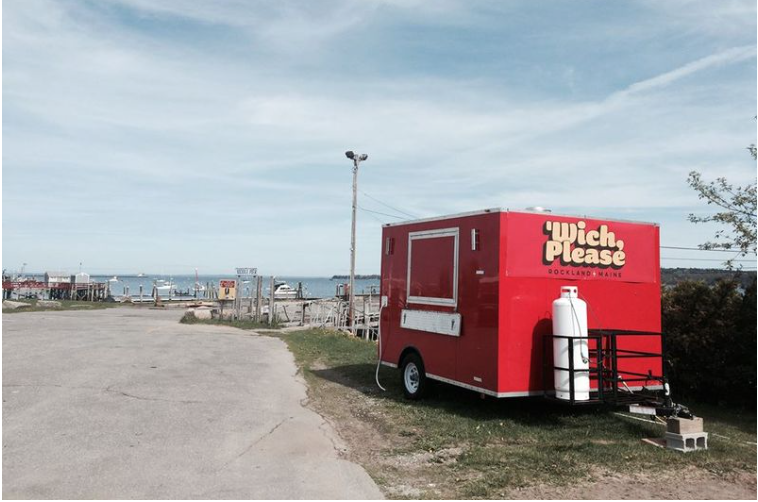
Company Concept and Description:
This is the fun part. Here you will describe what you hope the food truck will become, the food you plan to serve, and why you believe it will be a successful business. For most food trucks this section only needs to be a few paragraphs in length.
Make sure to include information on why your food is both desirable and unique to customers in the area. Also, if you have some type of theme, like an island theme for example, include little details like this in the description.
If you plan to operate something more mainstream like taco truck, take the time to express what it is that makes you different in your market. A common way food trucks differentiate themselves is through their ingredients or style. For example, you could be the only taco truck in town that uses organic, locally raised meats. Or you might be the only one in town that specializes in making fish tacos. Find a way to standout and offer something that isn’t available elsewhere.
You want folks that read this section to be able to clearly envision the kind of overall experience they’ll enjoy when visiting your food truck. Here are a few guidelines for writing this section:
- What food will you serve?
- How is your food different than other vendors in the area?
- Is there a specific type of consumer you want to attract?
As you can see from our own business plan, we differentiated ourselves through seasonal menu changes all the time and have menu options that cater to people that require a gluten-free diet. It’s also worth noting that our core product of peanut butter and jelly sandwiches is unique to the market.
Market Analysis:

Understand the players in your market before starting a business.
For smaller markets with a couple hundred thousand people living nearby this section might be short and include just 4 – 5 other trucks. However, if you’re entering a market like Los Angeles this section will be larger and more in-depth.
If you’re planning to enter a market that has 10 traditional taco trucks and you plan to start a traditional taco truck too, it will be to differentiate yourself from other vendors in the area.
Consider adding a spin to your own food concept like serving Asian tacos instead to provide local consumers will more variety and fill a potential need. If you’re not sure about the type of truck you want to create yet, looking at the market and seeing what type of food is missing can be a smart way to approach this.
In this area you’ll also want to identify the type of customer that will frequent your establishment. Any data about local trends that you can find will be useful to include as well like this report from IBIS World that forecasts growth in the United States food truck industry for the next 5 years. Google can be a good friend in locating the data to include in the document.
Management Structure:

Most food truck owners start with a management structure of one.
This section is straightforward for most food vendors. You can list yourself as the owner and operator if that applies. But don’t forget about key employees or partners too. Many food trucks need a team of 3 – 5 employees to operate successfully during a lunch rush. Make sure these long-term players are accounted for.
In our business plan, it’s a partnership between brothers. The work load is split up between one brother operating the front of the house and marketing: accepting orders, booking new business and events, emailing and calling catering leads. The other brother focuses more on the chef duties including sourcing ingredients, cooking food, working with suppliers, and ensuring food quality.
Industry Survey Results: What is the Average Income of a Food Truck Vendor?
If you have more than one owner of the business this is where you want to take the opportunity to clearly define roles. This is an extremely important section of the document when multiple parties and their money are involved. By outlining everyones responsibilities in this document, it serves as a record of who was in responsible for certain aspects of the business. The more people involved, the more diligent you need to be with assigning tasks.
If it’s not written down, it’s easy for partners to recall things differently. This will help avoid conflict in the future for all parties involved. You need this.
The more stakeholders involved, the more complicated this section will be. You should also include investors and advisors in this section even when people aren’t excepted to help with the daily business operations. Outline what value these people have delivered to the business and what return they can expect in the future.
Product Line:

Ready-made meals can be a great way to diversify your product line.
Finally… This is the section you finally get to describe your food. I recommend outlining the main menu items and any signature dishes that you have in this section. But don’t stop at just the food that you plan to serve.
Other products and services that you plan to offer could include corporate catering gigs or weddings. These can be the biggest money makers for a mobile food vendor.
It pays to think outside the box too in this section. Some vendors that started out by serving food out the window of a truck exclusively have now begun to sell their trademark dishes in stores, online, or at restaurant. Don’t forget to think about possible paths for growth in the business.
- Previous guest of the show Martie Richie of Motley Crews is an excellent example of someone that is doing just that. They’ve expanded to selling snacks online through their e-commerce website and at local gas stations.
- Malcolm decided to open a restaurant to attain more consistent sales, especially through the slow winter months.
Sales and Marketing:

A food truck can serve as a mobile promotional platform.
How do you plan to market your business and get sales? One of the biggest factors that determine the success / failure of a lunch truck is location. Will you be able to get into major events or areas with a lot of potential customers?
One of the biggest favors you can do for yourself to input into your sales and marketing plan is to create a tentative list of places you might be able to vend. Get extremely granular with this task. In fact, it might even help to print out a map to evaluate where the best potential vending locations are in your area.
Here’s the information you should gather as part of this process. You can add this information inside the sales and marketing section of the business plan as you gather it.
- Name of the vending location and cost details.
- Contact information including telephone, email, and address. Ideally a dedicated point of contact in charge of booking vendors.
Here are some locations that work well for food trucks:
- Farmer’s markets: You can usually find vendor information listed on the website.
- Annual events: Browse your cities website for a list of upcoming events like car shows, fairs, or parades.
- Social Media: One of the easiest ways to find good vending locations is to monitor the social media accounts of popular food trucks in your city. If they are vending somewhere, it’s probably a lucrative location that you might be able to vend at as well.
- Corporate Workplaces: Big corporate employers with a few thousand employees working at a single location can be a good option for generating consistent lunch sales.
- Breweries and Wineries: Places like this often don’t want to build in a restaurant into their operations and partner with mobile food vendors to supply food to guests.
Pro Tip: Make sure to have a a lot of different parking location options before getting started. Not every location you try is going to be profitable. By developing a big list of opportunities upfront, you won’t feel stressed about vending options because your dream vending location didn’t work out.
There are an endless number of tactics you can use to attempt to drum up business in the early days, but for most successful food business getting into events with big hungry crowds is the first step to building a brand locally and gaining traction. Learn more about finding profitable vending locations here.
Funding Request:
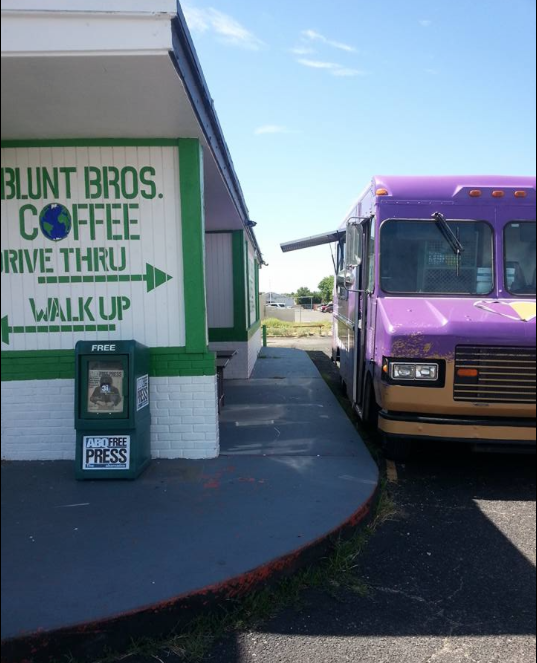
Just another day on the food truck.
The key to a good funding request is knowing exactly how much money you need and having a detailed plan explaining how you plan to use it. For food truck owners, the biggest early expense will be in buying a food truck and the kitchen equipment installed onboard.
You should also account for the amount of money you’ve raised or have on hand in this section. In our business plan for example, we were looking at $55,000 all-in to start the business. This would include the purchase of a food truck, our initial inventory of food, and permits. Be extremely diligent in outlining how you intend to spend every dollar in this section. It will safe you time late in the process and lenders will appreciate your attention to detail.
We were able to bring $14,850 or 27% of that total investment to the table that was raised mostly through personal savings, a small crowd funding campaign, and winning a business plan contest. The remaining 73% was acquired through the help of a small business loan. Being able to start a real food business like this for below $15,000 out of pocket is pretty cool.
Reader’s Note: If you’re not planning to seek funding through a traditional bank (or are simply planning to take out a personal loan based on your credit history) you can technically disregard this section, although you should still analyze closely how you intend to spend your money.
If you plan on asking for friends and family for money this attention to detail can help too. Even if they’re not in the food industry, it’s easy to understand that a commercial oven or fridge could cost a few thousand dollars. If you have a specific use for funds that makes sense, it increases the likelihood of obtaining a loan with friendly terms amongst family.
Financial Projections:
This is an extremely important area to spend time on before starting a food truck. I’d argue this section is as important as the product, sales and marketing plan of the business plan. This section will offer your first insight into whether or not the business idea you have is going to work or not in its present form.
From a practical standpoint, the main thing you want to figure out is what your break-even point for the business is. In other words, how much food do you need to sell in order to pay all of your monthly expenses? This is a simple, but critical question you must find the answer to before getting started.
You can determine the break-even point for a food truck business with this formula:
Fixed Costs / (Price – Variable Costs) = Bread Even Point
Here’s the due diligence you’ll need to complete to find the break-even point for your food truck:
- Add up the total monthly expenses you expect for the food truck to find your fixed cost number. This number will include loan payments, insurance, cell phone, and everything else you need to pay on a monthly. Use our guide to create a quick estimate of monthly costs.
- The price refers to how much you plan to charge customers and how many sales you anticipate in a given month. From your perspective the less sales you need to break even the better as it will.
- The variable costs is the expenses you put into cost of goods sold. In your case this if the food you’re selling. As you sell more, your variable cost will also increase because you need to buy more product. This is a good thing!
Based on your current fixed cost and variable cost estimates, find out how many total sales of your food total you would need to generate to pay all your bills. Does that number seem seem attainable based on the frequency you plan to vend each month?
Figuring out what your sales is going to be in the future will be the biggest leap of faith you make in the business plan. I always urge people to be being super conservative with sales estimates. You are going to have slow days and extremely busy days when you get out into the real world. Being financially ready for challenging times will make your business more resilient.
Forecasting Financial Projections:
In the financial projections, focus on estimating how much money you will make in the first year of the business. Investing too much time on longterm projections 5-years out doesn’t make any sense since you haven’t actually started the business yet. After the business has been operating for about a month, you’ll want to go back and review the previous estimates to ensure everything is making sense.
While estimating the projected revenue will require some guessing, figuring out startup and monthly operating expenses once the business gets going is much simpler. While there might be unexpected expenses that pop up before opening the business, you already know the monthly bills like insurance, phone, inventory, loan payments (if you have one), commissary. Read our post that includes a spreadsheet on the Complete Breakdown of Food Truck Operation Costs for help researching this section.
Here are a few other quick tips for the financial projections section:
- Always start a business with some extra capital on hand and establish an emergency business fund. We suggest $3,000 – $5,000 minimum. You don’t want to find yourself underfunded going into the second week so and not be able to purchase supplies. Unfortunately, break downs also happen in this business so you want to be ready for them.
- You’ll need to be comfortable making a few “educated guesses” in this section especially when it comes to revenue projections. Always be conservative with sales estimates. If you do end of exceeding expectations then that’s fantastic.
- The primary goal of completing this process is to understand how much money you’ll require to operate the business and break even on a monthly basis. After determining a break-even, find out how much it will require to pay yourself a comfortable wage after taxes.
Appendix:
This is the place to include your permit from the health department, photos of the vehicle, and other legal documents needed to operate a mobile food business. This is a good spot to add photos of food or people smiling and enjoying your meals at events (if you’ve vended at an event already). Add in anything else you feel could be helpful too.
Bonus Tips When Creating Your Building Plan
Here are a few key concepts pulled straight from the audio companion of this guide.
- Don’t be afraid to ask current food truck owners for help when writing a plan. They have the best understanding of what the market looks like and may even help you to create more accurate market projections. Not everyone will be willing to lend a hand, but some might.
- The financial projections section is the most important and practical element of the business plan. You need this to be able to evaluate how much money you’ll to start the business and what prices you’ll need to charge for longterm success.
- Don’t invest a ton of your time into longterm projections especially years 3, 4, and 5 of the food truck. Restaurants come and go. You won’t be able to make accurate projections out that far anyway.
- You should be extremely detailed when estimating expenses. Including often overlooked items like sandwich wrappers, napkins, mops, buckets, and cleaning supplies. Knowing how much cash you need for day one of starting the truck right is critical.
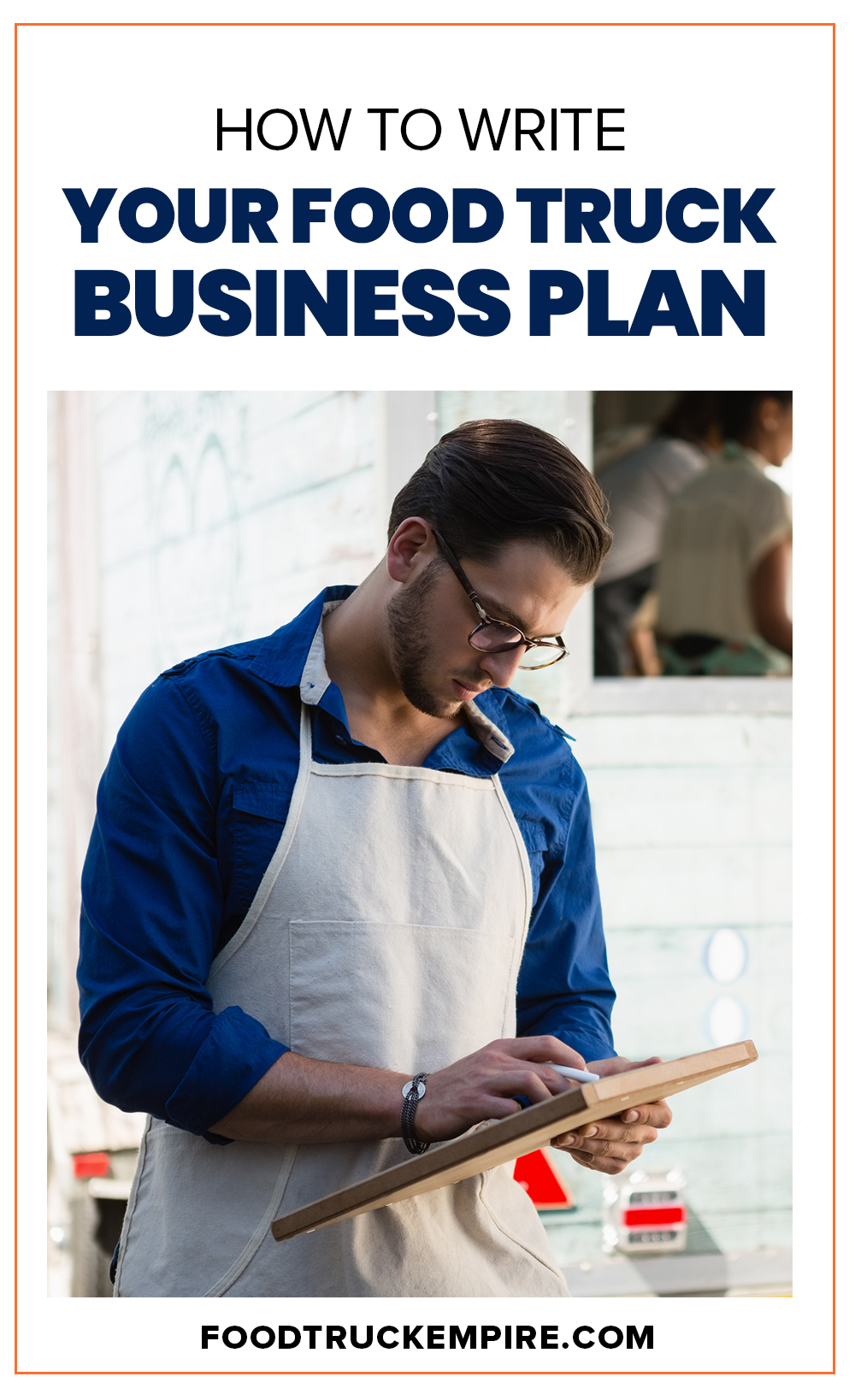
Is Creating a Business Plan a Total Waste of Time?
Good question. That really depends on who you ask.
There’s a whole group of like savvy entrepreneurs and business people who don’t believe in the business plan at all. They’re like okay, you have this written document that you never ever use again. But then there’s this whole other group of people that actually believe in the business plan.
If you’re planning to try to get a traditional bank loan you will need to create a business plan. Having a written plan does not guarantee you will be approved for a loan. In fact, you might get turned down even with an okay credit history.
While it’s not perfect, I firmly believe going through the process of writing a business plan, when taken seriously improves your chances of success. You want to understand your competition. You want to understand where you plan to park. You want to have a few ideas about how you might market your business and what your overhead is going to be before starting the business. This document helps you make more educated decisions based on the work you’ve put in.
The Bottom Line: Will drafting a detailed business plan like this one take a long time? You bet it will. If you do it right, it could easily take a month or two to complete. But the benefits of doing so can be worth it and pay dividends for the life of your business.
So what’s the next step? I suggest enrolling in our free food truck business kit to learn more about the startup process.

